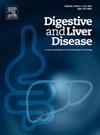肝移植治疗hbv相关感染引起的急性肝衰竭:北意大利移植计划的时间快照
IF 3.8
3区 医学
Q1 GASTROENTEROLOGY & HEPATOLOGY
引用次数: 0
摘要
背景和目的国际指南定义的病毒性急性肝衰竭(ALF)的全球负担仍不清楚,地域差异很大,疾病发病率数据有限。尽管几十年来已有了有效的疫苗,但hbv相关的ALF (HBV-ALF)仍然发生。本研究旨在估计:1)北意大利移植计划(NITp)中hbv - alf相关肝移植(LT)的负担,以及2)1991年意大利引入强制性新生儿疫苗接种后可能的流行病学变化以及高流行地区的移民流动。方法回顾性分析从1988年该项目开始到2024年,所有在NITp区域内为ALF移植的hbsag阳性LT受体。ALF的诊断基于国家超级紧急协议(2024年5月15日修订)定义的具体标准。排除HBV再激活引起的HBV相关急性慢性肝衰竭或ALF患者。结果:总体而言,356例(28.4%)任何病因的HBV-ALF受体中有101例被研究(见表);45.5%为男性,年龄中位数为42岁(16-69岁)。大多数ALF-HBV受体移植在伦巴第(3个中心,62.4%),其次是威尼托(2个中心,14.9%)、弗留利-威尼斯-朱利亚(8.9%)、马尔奇(7.9%)和利古里亚(5.9%)。将患者分为三个移植年代,观察到受者年龄逐渐增加(33岁vs 47岁,p= 0.001),年轻受试者的移植需求减少(51.6% vs 17.1%, p=0.006)。总体而言,大多数移植接受者出生在意大利(82.2%)。然而,时间分析显示,从2001-2012年开始,出现了外国出生的肝移植受者,随着时间的推移,这一群体中hbv - alf相关移植数量急剧上升(0比40%,p=0.002)。结论尽管普遍接种疫苗,shbv相关的ALF仍是肝移植的指征。随着时间的推移,观察到接受者年龄的逐渐增加和年轻人移植的减少,这可能反映了新生儿免疫的长期影响。相反,外国出生接受者的增加强调了来自高流行地区的移民流动对意大利HBV流行病学的影响。本文章由计算机程序翻译,如有差异,请以英文原文为准。
Liver transplantation for acute liver failure due to HBV-related infection: A temporal snapshot from the North Italy Transplant Program
Background & Aims
the global burden of viral-induced acute liver failure (ALF), as defined by international guidelines, remains unclear, with wide geographical variability and limited data on disease incidence. Despite the availability of effective vaccines for several decades, HBV-related ALF (HBV-ALF) still occurs. This study aims to estimate: 1) the burden of HBV-ALF-related liver transplant (LT) within the North Italy Transplant Program (NITp), and 2) the possible epidemiological changes following the introduction of mandatory neonatal vaccination in 1991 in Italy and the migratory flows from high-endemic regions.
Methods
we retrospectively analyzed all HBsAg-positive LT recipients transplanted for ALF within NITp area, from the program’s start in 1988 to 2024. ALF diagnosis was based on specific criteria defined by the National Super-Emergency Protocol (revised on May 15, 2024). Patients with HBV-related acute-on-chronic liver failure or ALF due to HBV reactivation were excluded.
Results
overall, 101 HBV-ALF out of 356 (28,4%) ALF-LT recipients of any etiology were studied (see Table); 45.5% were males, and median age was 42 years (range 16-69). Most of ALF-HBV recipients were transplanted in Lombardia (3 centers, 62,4%), followed by Veneto (2 centers 14.9%), Friuli-Venezia Giulia (8.9%), Marche (7.9%) and Liguria (5.9%). Dividing patients into three transplant decades, a progressive increase of recipient’s age (33 vs 47 years, p<0.001) and a reduction in transplant need among younger subjects (51.6% vs 17.1%, p=0.006) were observed. Overall, most LT recipients were born in Italy (82.2%). However, temporal analysis revealed the emergence of foreign-born LT recipients starting from the 2001-2012 period, with HBV-ALF-related transplants in this group rising sharply over time (0 vs 40%, p=0.002).
Conclusions
HBV-related ALF remains an indication for liver transplantation despite universal vaccination. Over time, a progressive increase in recipient age and a reduction in transplants among younger individuals were observed, possibly reflecting the long-term impact of neonatal immunization. Conversely, the rise in foreign-born recipients underscores the influence of migratory flows from high-endemic areas on HBV epidemiology in Italy.
求助全文
通过发布文献求助,成功后即可免费获取论文全文。
去求助
来源期刊

Digestive and Liver Disease
医学-胃肠肝病学
CiteScore
6.10
自引率
2.20%
发文量
632
审稿时长
19 days
期刊介绍:
Digestive and Liver Disease is an international journal of Gastroenterology and Hepatology. It is the official journal of Italian Association for the Study of the Liver (AISF); Italian Association for the Study of the Pancreas (AISP); Italian Association for Digestive Endoscopy (SIED); Italian Association for Hospital Gastroenterologists and Digestive Endoscopists (AIGO); Italian Society of Gastroenterology (SIGE); Italian Society of Pediatric Gastroenterology and Hepatology (SIGENP) and Italian Group for the Study of Inflammatory Bowel Disease (IG-IBD).
Digestive and Liver Disease publishes papers on basic and clinical research in the field of gastroenterology and hepatology.
Contributions consist of:
Original Papers
Correspondence to the Editor
Editorials, Reviews and Special Articles
Progress Reports
Image of the Month
Congress Proceedings
Symposia and Mini-symposia.
 求助内容:
求助内容: 应助结果提醒方式:
应助结果提醒方式:


